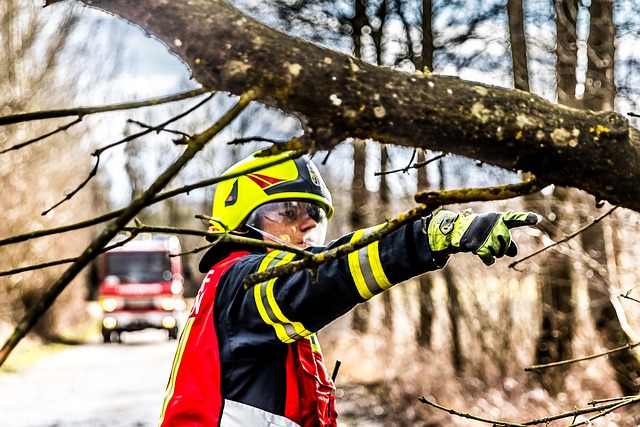“Enhance the health and beauty of your Anderson, SC landscape with expert tree trimming and pruning services. From understanding the benefits for stronger trees to recognizing signs of distress, this guide covers all things tree care. Learn why professional commercial tree removal in Anderson SC is crucial for safe, effective maintenance. Discover best practices for post-pruning tree care, ensuring your trees thrive for years to come.”
- Understanding Tree Trimming and Pruning Benefits
- Identifying When Your Trees Need Attention
- The Role of Professionals in Safe Removal
- Maintaining Tree Health Post-Pruning
Understanding Tree Trimming and Pruning Benefits
Tree trimming and pruning are essential practices that contribute to the overall health and longevity of your trees. These services, offered by professional commercial tree removal companies in Anderson, SC, involve carefully selected cuts to remove dead or diseased branches, thin out crowding limbs, and shape the tree for optimal growth. By understanding the benefits of these techniques, homeowners can ensure their trees remain vibrant and robust.
Regular trimming and pruning stimulate new growth, encourage healthy development, and enhance the tree’s natural beauty. It helps to prevent structural damage by reducing the risk of broken branches due to weight or storm stress. Moreover, it improves air circulation and sunlight penetration, fostering a healthier environment for the tree’s roots and overall canopy. These practices are vital for maintaining the tree’s aesthetic appeal and safety, making them integral components of proper tree care.
Identifying When Your Trees Need Attention
Many homeowners often wonder if their trees require professional attention, especially when it comes to trimming and pruning. While regular maintenance is beneficial for overall health, identifying the right time to call in the experts is key. In Anderson, SC, professional commercial tree removal services can make a significant difference in keeping your trees robust and vibrant.
Signs that indicate your trees might need expert care include excessive branching, dead or diseased limbs, or an uneven structure. These issues not only affect the aesthetics but also the overall health of the tree. Professional arborists will assess these factors and provide tailored solutions, ensuring the safety and longevity of your trees while also enhancing their natural beauty.
The Role of Professionals in Safe Removal
When it comes to tree trimming and pruning, especially for larger or more mature trees, enlisting the help of professional commercial tree removal services in Anderson, SC, is essential for safety and optimal tree health. These experts are trained to handle the intricate process of removing branches accurately and securely, minimizing damage to both the tree and surrounding structures.
Professionals employ specialized equipment and techniques tailored to various tree species and conditions, ensuring a safe and efficient removal process. By employing these services, homeowners can avoid the risk of injury from falling branches or the potential for property damage during the trimming and pruning process, allowing them to focus on the overall well-being and aesthetic appeal of their trees.
Maintaining Tree Health Post-Pruning
After professional commercial tree removal or pruning in Anderson, SC, it’s essential to understand how to maintain your trees’ health moving forward. Proper care post-pruning ensures your trees continue to thrive and grow robustly. One key step is to keep an eye out for any signs of disease or insect infestation that might have been exposed during the trimming process. Early detection can prevent further damage, so regular inspections are crucial.
Additionally, maintaining a consistent watering schedule and applying appropriate fertilizers at recommended intervals will support your trees’ recovery and overall health. Remember, proper pruning techniques should enhance the tree’s natural shape and structure, so be sure to choose experienced professionals who understand the specific needs of different tree species.
